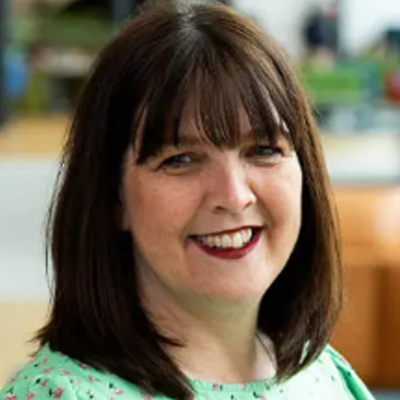Chapter 10 – Playful practicals: breaking free from educational norms with online escape rooms
Dr Emma Gillaspy; Dr Abhi Jones; Gemma Spencer; and Julia Robinson
Recreational escape rooms are becoming increasingly popular as social immersive experiences (Veldkamp et al., 2020). Escape rooms challenge players to work together in order to solve puzzles and complete tasks to ‘escape the room’ within a specific time. Play is well known to improve cognitive development in both children and adults (Piaget, 1962; Vygotsky, 1962) and gamification fosters the relationship between fun, focus and learning outcomes (Tulloch, 2014; van Gaalen et al., 2021). Escape rooms therefore offer a fun and novel way of developing interpersonal skills and effective team working and universities have begun to apply this approach across multiple disciplines. This chapter shares our experience of designing and delivering online escape rooms to develop practical skills in healthcare education and considers further playful applications across Higher Education.
Developing an interprofessional healthcare online escape room
Healthcare education standards highlight the importance of interprofessional teamwork, leadership and communication for improved patient outcomes therefore escape rooms offer an opportunity to develop these skills in an engaging and effective way. Escape rooms also allow the students to ‘fail’ in a safe space, providing an opportunity to reflect on their response to challenge, facilitating deeper learning experiences and developing emotional intelligence and resilience. This playful concept was adapted by the Schools of Nursing and Midwifery and Medicine and Dentistry at the University of Central Lancashire to develop clinical simulation escape rooms. These were initially designed as face-to-face practical sessions using high fidelity mannequins with the clinical equipment needed to save the patient in locked boxes. The students generated codes to unlock the boxes by completing clinical calculations and other patient-related puzzles, for example choosing the correct oxygen mask or antibiotic combination.
Once the pandemic hit, the team quickly adapted the escape rooms into digital learning experiences for healthcare students. In these innovative online spaces, students work together in live sessions facilitated using Microsoft Teams. Split into small multidisciplinary groups, 4-6 students work as a team, exploring a timed interactive multimedia scenario to identify and solve clinical puzzles, save the patient and escape the ward. One practical session based on the sepsis pathway can be seen here whilst a flat image of this 360-degree simulation can be viewed below.

To solve these scenarios, the students must rely on their collective clinical knowledge and draw upon their understanding of the different expertise of each discipline. This reliance on each other in a real-time activity facilitates an active approach to developing practical teamwork, communication and leadership skills. Using simulation-based education principles, the students then complete a facilitated reflective debrief in their small teams followed by a further debrief as a full class. This deepens the learning and develops reflective and resilient practitioners who understand the strengths of multidisciplinary teams in healthcare.
Designing your own online escape room
To engage staff with escape room design, we put together a puzzle outlining the steps involved in creating an escape room. Have a play and see what you think, would you do it in the same order as us? You may choose to follow a different path; your discovery is an important part of the process in learning what works for your students. A good starting point to design your own escape room is to ask yourself what the session learning outcomes are, and how you can weave that into an engaging narrative. The best way to get your puzzling head on is to play a few recreational escape rooms which is sure to get your ideas flowing.
We typically start with a team brainstorming session, asking questions such as what are the learning outcomes? What else do we want students to learn? Why is an escape room the best approach? This helps us to identify a narrative that fits with the pedagogy and learning outcomes. For example, for our sepsis-based escape room, we wanted to replicate the clinical environment and so the room was based in a clinical skills laboratory at the University. This is also useful for student engagement as this is a familiar learning environment. Being able to move around the room and find clues or puzzles to solve is a fundamental aspect of an escape room, and therefore a 2D image did not fit our needs. We therefore used an Insta 360 camera to capture the clinical skills scenario. The camera is simple to use with a smartphone and takes a 360-moveable image of any room (be careful to hide around a corner, otherwise you end up in the picture). For a quicker and cheaper approach, there are a number of free apps available that allow smartphones to take a 360 image. We then used the platform Thinglink to host the scenario, adding ‘tags’ (flashing icons) to embed puzzles and information needed to solve the game. Thinglink is a simple online software where any format of information can be embedded into a flat or 360 image or video clip. Thinglink also have their own library of free images that can be utilised and their collaboration with Canva has now created an even wider collection of images. Timers can now also be embedded in Thinglink to create a more realistic escape room without the need for additional technology. There are other platforms that can be used to create online escape rooms such as Genially, Microsoft OneNote, Microsoft Sway or Articulate Rise. You can also use virtual learning environments such as Blackboard Ultra and Canvas. If you are a novice escape room creator, we would encourage you to give immersive digital storytelling a go.
Once you have some ideas for your individual puzzles or tasks within the escape room, LearningApps is a useful open access tool to create your puzzles. You can equally upload hand-drawn cipher images, logic puzzles or riddles. Have a play to find out which puzzles would work for your escape room idea. You can also embed Microsoft or Google Forms as quizzes or evaluation to get your real-time feedback. Escape rooms can be as simple or as complex as you create them to be.
We chose to add a series of padlocks for the students to unlock by determining the correct codes. As our scenario was based on a specific health pathway, we made the padlocks sequential to align with the expected clinical care pathway for sepsis, although to make a simpler escape room the locks could be non-sequential meaning the puzzles can be solved in any order. We used the free web-based site flippity.net to create our digital padlocks, this site also has other templates that could be used for embedding puzzles such as card matching games or quizzes. Unlocking the final padlock provides a code the students use to ‘escape the room’ and complete the game playing aspect of the session. In this example, we created a second ThingLink using a congratulations image and added a ‘conditional transition’ linking to this from the main ThingLink. As sepsis treatment is time critical, students were given an hour to complete the game, save the patient and exit the room.
As part of the planning process, it is useful write a comprehensive facilitator guide that includes a script with helpful prompts. The facilitator guide also provides an extensive debriefing tool to be used after a short break on completion of the activity. This is where the intended learning outcomes can be broken down and discussed in detail, encouraging reflective practice leading to deeper learning.
Three steps to get started
Identify a narrative that fits with your topic. For example, if you have language students, you could create a scenario in an airport whilst genetics students might play a Jurassic World style escape room.
Think of three puzzles that fit with your storyline and learning outcomes. For example, an airport escape room could include an audio clip they need to translate whilst genetics students might need to identify a mutation in a dinosaur DNA sequence.
Embed your puzzles into a single platform, you could try Thinglink, Sway or OneNote. Then start playing!
Top tips
If a team of facilitators are running different rooms at the same time, open a facilitator-only instant messaging chat to update each other on team progress and aid parity of experience across the live sessions.
Once you have introduced the escape room and the teams are in their breakout rooms, turn your microphone and camera off, only adding hints in the chat if absolutely needed. This prevents the students looking to you as the ‘teacher’ for answers, encouraging them to work as a team to problem solve.
If your room is time dependant, use a timer for accuracy – this also helps if you decide to add a competitive element such as a leader board. Thinglink has recently added a Timer function that can be embedded or you can manually time the session.
Transformative impact for both staff and student
In our experience, escape rooms create a student-centred immersive learning environment based on contemporary pedagogy. Interestingly, our evaluation demonstrated equal value and positive feedback whether the practical was facilitated online or face-to-face, with students identifying they had developed core skills such as communication, teamwork and leadership. Observing the online teams led to the addition of key debrief questions around tapping into the resources of the whole team and the impact of feeling included or excluded, which can be easier to notice in the online environment. The online practical sessions also added value through enabling the debriefing of skills needed for effective telemedicine, an area of healthcare that has significantly grown during and beyond the pandemic. From a recent survey of students completing our online interdisciplinary sepsis escape room, they rated the experience at 4.8/5 stars with 96% agreeing (78% strongly agreeing) that it both stimulated and challenged their thinking and would recommend it to other students. They described the experience as exhilarating, fun, engaging, interactive, intellectually stimulating and eye opening and asked for more sessions to be developed using this approach: “Overall a great, useful and educational experience! Would love to have more of these kinds of sessions!”. The students themselves identified the possibility of using such scenarios for formative or summative assessment: “I think that this sort of activity could help to shape other similar activities such as…student competency assessments”.
Our experience is not without barriers though. Students are initially reserved and look to their educators for specific guidance and rules to follow due to the traditional paternalistic nature of Higher Education. The concept of escape rooms is to facilitate self-determined learning through collaborative communication and problem solving. These are directly comparable skills needed for quality care and clinical decision making. Without explicitly introducing the pedagogical background, students could be unaware of the impact of the learning that takes place through play and become fearful of ‘getting things wrong’. It is therefore important that the facilitator introduces the ‘why’ of the escape room in the context of the discipline and encourages this as a safe space to experiment and potentially fail in order to learn. Whilst there is an element of competition in these escape rooms, both against the clock and other teams, we stress in the debrief that it’s collaboration rather than competition that creates successful outcomes. This helps to engage both those who are driven by the element of competition and those who perceive the same competition as a barrier (Walsh, 2019). A useful note from our experience of online facilitation is that some teams and individuals will naturally turn their cameras on while other teams use just their audio to communicate. We feel by not directing their preferences this helps them understand the inclusive needs of the others in the groups. In the debrief, we discuss the advantages and disadvantages of their chosen play approach with further reference to how they might best manage teamwork and patient care in the increasing digital workload of healthcare practitioners.
Healthcare education typically encompasses both theoretical and practical professional placement components. Whilst the theoretical component has various elements including lectures and small seminar groups, this is often from a traditional, didactic standpoint widening the theory to practice gap often seen on these programmes of study. Educators in healthcare tend to favour the development of practical skills through a ‘see one, do one, teach one’ approach rather than a learner-led environment. We have therefore experienced resistance from those staff who are suspicious of using playful approaches for ‘serious’ subjects with the belief that students cannot truly learn through play (James & Nerantzi, 2019). In our experience, educators that favour this traditional model of teaching are initially fearful of facilitating an active approach. The art of the learner determined approach is grounded in ‘not doing’, instead observing the students activating their agency, choosing their own path through the learning experience and supporting them in reflecting on this experience (Gillaspy & Vasilica, 2021). In writing this chapter, we reflected on our own development as non-doers. One such example was how we used our backchannel chat during the facilitation of synchronous online escape rooms to encourage each other to not provide a clue but rather wait and observe how the students inevitably find a way to solve the problems on their own. This can feel like a scary place, where thoughts emerge of not providing all the answers somehow meaning we are not doing our job properly. We agree that letting go of the need to be the expert has been a lightbulb moment for each of us at some point in our career. We also agreed that support and encouragement from a peer or mentor was important in fostering the lightbulb moments we each experienced.
To date, our online escape room practical sessions have been successfully facilitated as interprofessional educational activities for nursing, medicine and physician associate students. The success of these escape rooms also resulted in the development of further applications in single healthcare disciplines as both team-based and individual self-directed learning experiences. This concept has been so successful that it has been used to establish a sustainable approach across the whole University, creating a community of playful practitioners who work collaboratively to influence the facilitation of active learning for our students and encourage staff to break down disciplinary boundaries for the benefit of all. As we have moved back to more face-to-face teaching, the online delivery of escape rooms is still being offered to provide a flexible and fun opportunity to develop our future graduates.
Recommendations for Educational Developers
When supporting staff in developing their playful practice, it’s useful to start by encouraging ‘unstructured’ play time. Nostalgic childhood crafts or games such as PlayDoh and fortune tellers can work well but most important is choosing something that is congruent with your own values and beliefs to make this an authentic experience (Gillaspy, 2020). This releases the shackles of our assumptions and creates a space where anything can and will happen.
Working and playing together in a spirit of creative open collaboration (Nerantzi et al., 2021) has been key to the success of this initiative. We recommend the development of more open ideas and play spaces in departments, institutions and across the sector for staff to support and challenge each other to push the boundaries of active learning. We would also like to see experimentation, risk and failing in safe spaces encouraged and valued through curriculum and academic development.
Finally, we look to our educational development communities to lead the way in taking the next step in playful practice and take us all to our learning edges together.
References
Gillaspy, E. (2020). Developing the congruent academic through an integrated coaching approach. International Journal for Academic Development, 25(3), 285-289. https://doi.org/10.1080/1360144X.2019.1593175
Gillaspy, E. and Vasilica, C. (2021). Developing the digital self-determined learner through heutagogical design. Higher Education Pedagogies, 6(1), 135-155. https://doi.org/10.1080/23752696.2021.1916981
James, A. and Nerantzi, C. (2019). The power of play in higher education: Creativity in tertiary learning. Springer.
Nerantzi, C., Chatzidamianos, G., Stathopoulou, H. and Karaouza, E. (2021). Human Relationships in Higher Education: The Power of Collaboration, Creativity and Openness. Journal of Interactive Media in Education, 2021 (1), 26. http://doi.org/10.5334/jime.668
Piaget, J. (1962). Play, dreams and imitation in childhood. Norton.
Reeve, J. (2021). Compassionate Play: why playful teaching is a prescription for good mental health (for you and your students). The Journal of Play in Adulthood, 3(2), 6-23. https://doi.org/10.5920/jpa.855
Tulloch, R. (2014). Reconceptualising gamification: Play and pedagogy. Digital Culture & Education, 6(4), 317-333.
van Gaalen, A., Brouwer, J., Schönrock-Adema, J., Bouwkamp-Timmer, T., Jaarsma, A., and Georgiadis, J. R. (2021). Gamification of health professions education: a systematic review. Advances in health sciences education: theory and practice, 26(2), 683–711.
Veldkamp, A., van de Grint, L., Knippels, M., and van Joolingen, W. (2020). Escape education: A systematic review on escape rooms in education. Educational Research Review, 31.
Vygotsky, L. S. (1962). Thought and Language. Wiley.
Walsh, A. (2019). Giving permission for adults to play. The Journal of Play in Adulthood, 1(1), 1-14. https://doi.org/10.5920/jpa.565
As advocates of playful, creative and interprofessional learning, this chapter is authored by the following collaborative team based at the University of Central Lancashire: Dr Emma Gillaspy, Dr Abhi Jones, Gemma Spencer, and Julia Robinson. Together, they look to transform healthcare education through breaking down disciplinary boundaries, innovating at the interfaces to create a more collaborative and inclusive learning environment.





